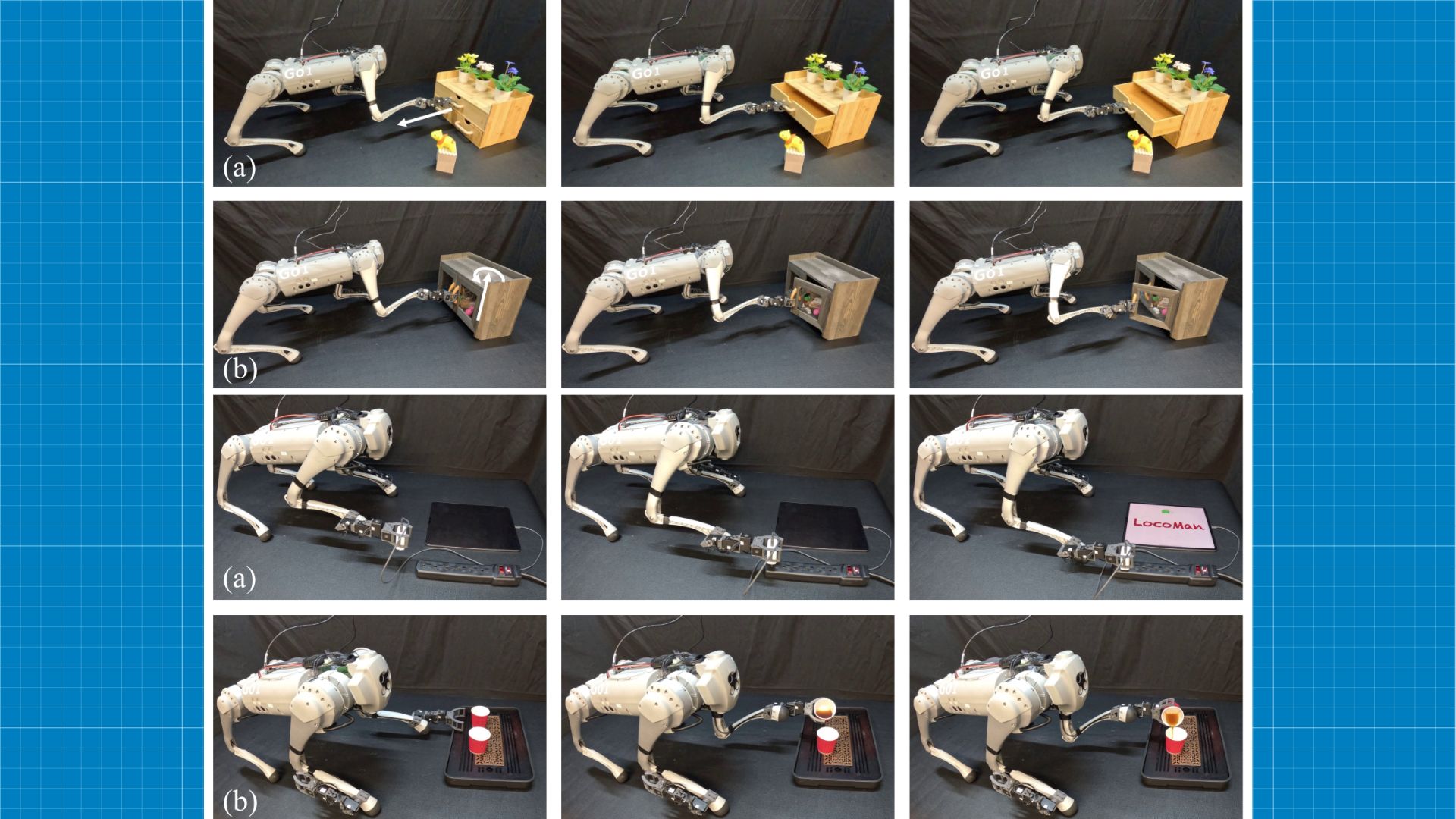- 行业动态
LocoMan: Scientists unveil new quadruped robot with hand
时间:2010-12-5 17:23:32 作者:资讯 来源:新闻中心 查看: 评论:0内容摘要:By subscribing, you agree to our Terms of Use and Policies You may unsubscribe at any time.AlthoughBy subscribing, you agree to our Terms of Use and Policies You may unsubscribe at any time.
Although humanoid robots tend to often grab the limelight, quadrupedal robots— those mimicking the locomotion of four-legged animals— have witnessed significant innovations of late.
Earlier this year, Boston Dynamics’ SPOT robotic dog officially became the first of its kind to become a police hero dog when a Massachusetts State Police SPOT unit named Roscoe was shot in the line of duty.
Quadrupedal robots navigate challenging terrains and squeeze into tight spaces, making them invaluable for various applications. However, they are limited by a lack of precision manipulation capabilities.
Featured Video RelatedUnlike humanoid robots, quadrupedal robots lack hands, restricting them to rudimentary interactions such as pushing or kicking objects. While some efforts attempted to equip them with robotic arms, these compromised agility and mobility due to increased weight, reducing maneuverability.

LocoMan performing various tasks with its arms. (Source: Zhao et al.) Dual-purpose limbs
To this end, a team of researchers from Carnegie Mellon University, the University of Washington, and Google DeepMind have developed an interesting solution, the LocoMan add-on system. The LocoMan system transforms the legs of quadrupedal robots into dual-purpose appendages.
“Quadrupedal robots are versatile agents capable of performing locomotion and manipulation in complex environments,” Ding Zhao, an associate professor at Carnegie Mellon University and co-author of the research paper, told Tech Xplore. “Traditional designs typically incorporate top-mounted arms for manipulation tasks. However, these configurations may limit the robot’s payload, stability, and efficiency. We do not see a dog with an arm on the back in nature.”
The team designed the LocoMan system with newly developed manipulators that can be attached to the calves of quadrupedal robots. Not only is the solution lightweight and low-cost, but the LocoMan system is also compatible with existing quadrupedal robots.
The bespoke manipulators enable the movement in 3 degrees of freedom (DoF), allowing tasks such as picking and placing objects. Additionally, these Loco-manipulators do not compromise the robot’s ability to traverse challenging terrain and agility.
Potential applications
The research team demonstrated the robot’s dexterity through a series of real-world experiments. LocoMan, in addition to being low-cost and compact, can tackle complex manipulation tasks. Some of its capabilities include opening doors, plugging electronics into sockets, and picking up objects in confined spaces.
“We achieved 6D pose manipulation,” highlighted Changyi Lin, a first-year Ph.D student in Zhao’s lab. Lin explained that the LocoMan— operating under a Whole-Body Control (WBC) framework— seamlessly transitioned across five operational modes.
These modes include using just one of its gripper hands to manipulate objects, using just one of its legs/feet to interact with the environment, employing both its gripper hands together for dual-arm manipulation tasks, regular quadruped walking and mobility, and even manipulating objects while simultaneously locomoting on the move.
Their new technology will be tested soon in a wider range of settings and be used to tackle real-world problems. Zhao and his colleagues intend to enhance the robot using computer vision and machine learning algorithms.
“Our research offers a different perspective on intelligent robots. Rather than replicating humans with a similar morphology, we would like to provide a complementary robot that can do what humans may not want to do,” remarked Zhao. “LocoMan makes it possible for quadrupedal robots to perform complex manipulation tasks in narrow spaces.”
“The integration of vision-language models is anticipated to revolutionize how LocoMan generates actions,” Zhao added. “This could be achieved by interpreting visual perception of environments and processing verbal instructions from humans, enabling a more intuitive and seamless interaction.”
The team’s research was published in the pre-print journal arXiv.
- 最近更新
-
-
2024-09-22 05:26:49Best Labor Day headphones deals: Apple, Bose, Beats, and more on sale
-
2024-09-22 05:26:49柑沁园:聚焦道地陈皮,融合创新药食茶健
-
2024-09-22 05:26:49一校一亮点 夯实学校育人阵地
-
2024-09-22 05:26:49可胜山珍海味,干饭人必备丨舌尖上的汕尾·丝苗米篇
-
2024-09-22 05:26:49科创筑梦树立远大志向 蓄势赋能培养科技人才
-
2024-09-22 05:26:49加入中华骨髓库 再造生命的奇迹
-
2024-09-22 05:26:49雪雁自驾:打造百亿级自驾游安保平台
-
2024-09-22 05:26:49媲美顶级和牛!山下雪花邀您12月11
-
- 热门排行
-
-
2024-09-22 05:26:49Webb scientists haven't found a rocky world with air. But now they have a plan.
-
2024-09-22 05:26:49兴农评丨为何说农业GDP就是民生GDP、幸福GDP?
-
2024-09-22 05:26:49俄罗斯客商走进蕉岭毛竹产业园验厂!昱竹公司竹制品获好评!
-
2024-09-22 05:26:49途经雅西高速拖乌山段须谨慎驾驶
-
2024-09-22 05:26:49Number of COVID
-
2024-09-22 05:26:49市检察院、雨城区检察院联合开展“检察开放日”活动
-
2024-09-22 05:26:49海红米,粮安新势力!
-
2024-09-22 05:26:49移动检验监测车开进广州白云,将为水产养殖提供快检服务
-
- 友情链接
-
